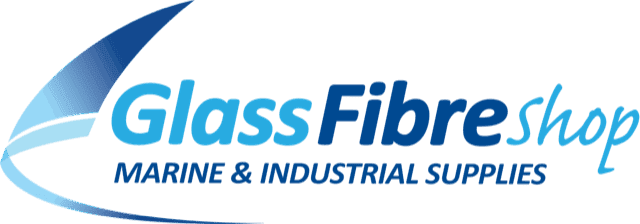FAQ’s
Q: What does GRP stand for? A: GRP is an abbreviation for Glass Reinforced Plastic. It consists of fibre-reinforced plastic which are further reinforced by tiny glass fibres. This is the same material used for boat building, as it is very lightweight, yet extremely strong and robust.
Q: What percentage of Hardener do you mix into resin? A: 1% to 3%. These percentages are based on working in a temperature of 16 degrees Centigrade. Please view our Catalyst Mixing Chart
Q: What resin should be used with carbon fibre? Polyster or Epoxy? A: Carbon Fibre should only be used with Epoxy or Vynalester Resin.
Q: What is the life expectancy of Glass Fibre? A: The life expectancy of a GRP boat is over 40 years. The first production boat (Nohoh – 25’long) built in the UK was in the 1958. .An analysis of the hull was taken in 2005 by International Paint’s and they reported that the laminate ‘was essentially sound’.
Q: What are the major uses of Glass Fibre in industry? A: Glass Fibre is used in many industries, such as: Boats, Cars, Signs, Architectural replicas, Aeroplane parts, Bus Parts, Fire surrounds, Engine Covers, Water tanks, the list is endless.
Q: Can you increase the thickness of the fibreglass in a boat? A: Yes. Abrade the surface with rough sandpaper and clean with acetone before applying the resin and Glassfibre. Remember you should only apply maximum three layers at a time adding 1% catalyst mix at low ambient temperature, thus ensuring low exotherm heat buildup.
Q: What is the difference between flow coat and gel coat? A: Flow coat is a gelcoat, with a wax in styrene additive for use as a top coat.
Q: Once flow coat has been used, is it possible to bond to the surface if changes or repairs are needed to the structure? A: Yes it is possible, you need to clean the area thoroughly (preferably using Acetone) then sand back the surface before carrying out your repair.
Q: What colours are available? A: All Ral colours are available to order. We also have available standard West & Senior colours. Please view our Colour Charts.
Q: What are the Health & Safety implications using Glassfibre? A: Before undertaking any GRP project you should be aware for your own safety and take all the necessary steps you understand the materials you are working with. Please note: Material Safety Data (MSDS) sheets are available on all products sold, please check downloadable PDF file attached and General Health & Safety information sheet. Goods are packed in UN rated tins containing all up to date Hazardous information and labelling. Basic guidelines When using GRP materials you should not eat or drink anything in case of accidental ingestion. Never smoke when using ANY flammable materials, and keep away from naked flames. NEVER let any Resins or Catalyst come into contact with the skin. Always wear protective clothing when using GRP materials, covering hands and body, use protective goggles to cover eyes. Polyester Resin should be stored in a dry and well ventilated room, away from any heat source and temperature below 20 degrees C. Please ensure common sense is used when working with any kind of GRP materials, always read the relevant data sheets issued with your product. Catalyst / Hardner.MEKP is an organic peroxide. Although it has a flash point higher than 100 degrees F. and is not considered a flammable liquid, it has a unique fire hazard. If an organic peroxide such as MEKP ignites, it produces its own oxygen which makes it quite difficult to extinguish. Consequently, MEKP should be stored in a cool place away from flammable liquids and away from direct sources of ignition. After reading the above, as long as common sense prevails Glassfibre materials are very safe to use.
